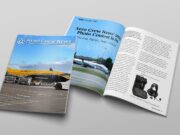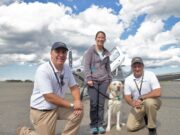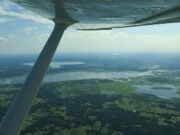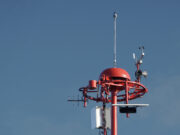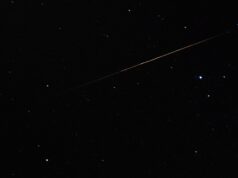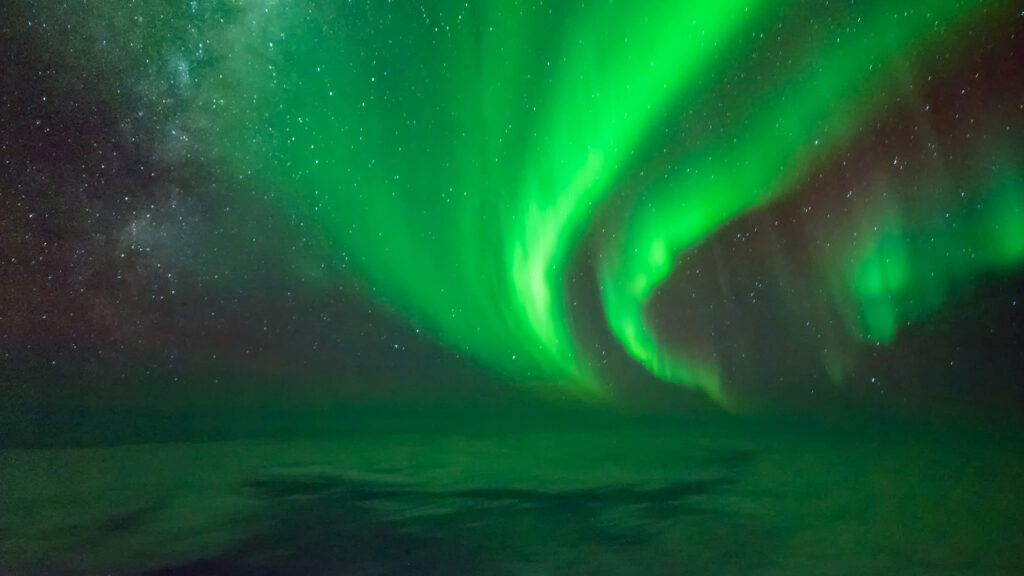
Editor’s Note: This month and quarterly into the future, we welcome renowned British astronomer Howard Parkin to our pages. Howard will educate us on what we are seeing in the night sky as we redeye. You’ll find interesting facts, amazing observations and exciting information that will be fun to share with the children in your life too. Howard, who lives on the Isle of Man in Great Britain is a university lecturer and DarkSky advocate who describes a magical moment and highpoint in his career when he was invited to speak with astronaut Nicole Stott while she was on the International Space Station. I met Howard aboard the Viking Jupiter where he was serving as Resident Astronomer. I am so delighted that he has consented to share his knowledge with all of us.
As the Earth travels in its orbit around the Sun, the stars rise every night sky just under four minutes earlier every 24-hour period. Usually in astronomy, we advise sky-gazers what is visible on a seasonal basis, at approximately 22:00 UTC—defined as the winter, spring, summer and fall skies. However, as overnight flights travel during the hours of darkness, the sky changes quite noticeably. This column will cover what is visible between the times of 22:00 and 04:00 UTC, basically covering two consecutive seasons.
From an astronomical perspective, flight crew are in a fortunate position as they look from the flight deck for two reasons. Firstly, there will be minimal light pollution, as the flight deck instrumentation uses red lights to protect the flight crew’s night vision. Secondly, the altitude of the aircraft, well above the cloud base, will mean the clarity of the stars is quite noticeable.
Looking towards the northern horizon, over just a few minutes time, you will notice that the sky appears to revolve around a specific point in the sky. This is called the Northern Celestial Pole (NCP), and we have a star very close to the NCP called Polaris, often just called the Pole or North star. If you were to fly directly over the geographical north pole, the NCP would be directly above the aircraft. However, if you are travelling near or close to the equator, the NCP will be on the northern horizon. The height of the Polaris above the horizon will always reflect your current latitude, as your flight-deck instrumentation will readily confirm.
At this time of year in the northern celestial sky, the familiar pattern of the Big Dipper is visible to the right of Polaris. The Big Dipper is what is known as an “asterism” consisting of just seven of the brightest stars in the constellation Ursa Major, the great bear. The stars of the Big Dipper can be used to find Polaris and thus due north. The two stars at the bowl end of the asterism of the Big Dipper are called Merak and Dubhe. If you extend a line from these two stars about three times the distance between them, you will arrive at Polaris and the NCP.
If you’re gazing without your instruments, you can easily work out an estimate of your latitude. Hold your arm with your fist upright in front of you with the bottom of your fist upon the horizon. Your fist represents approximately ten degrees of latitude. Measure how many fists high the star Polaris appears to be above the horizon. This a fundamental principal of celestial navigation used long before the vast array of instruments and equipment pilots at sea and in the air use today. In February, the Big Dipper is standing on its tail to the right or east of Polaris, but six hours later at 04:00 a.m. it will appear directly overhead.
The chart below shows the Big Dipper’s rotation around Polaris, and during only a few hours flight time, will clearly show the rotational effect of the Plough (another name for the Big Dipper) moving around the NCP. Now looking toward the southern skies, the effect of the rotation is far more pronounced, and we see a succession of the constellations transiting across our southern sky.

The Big dipper moves 90 degrees counterclockwise, around the pole every six hours, (or every three months on a seasonal basis).
We also have in the sky the celestial equivalent of the Earth’s equator—the “celestial equator.” If you were flying over the north pole, the celestial equator would be at 90 degrees and would be the horizon in every direction. At the equator, the celestial equator would be a line going from west to east passing directly overhead.
In February, turning to the south and western skies ,there are no fewer than 12 very bright stars all quite close to each other. Add to this list two bright planets, Jupiter and Mars, and the sky is quite spectacular. Eleven of these 12 very bright stars comprise (or are within) a large hexagon shape, which dominates the southern sky. The next diagram shows the hexagon, which is another “asterism.” The hexagon is much larger than most people imagine and from a latitude of around 50 degrees, it stretches from the brightest star in the night sky, Sirius, near the horizon to Capella, almost overhead. The diagram also shows the location and ranking of all 12 stars in the top 30 of the brightest stars in our skies and shows the positions of the planets Jupiter in Taurus and Mars in Cancer.

Turning to the planets visible in February 2025, the western sky at dusk has the very bright planet Venus visible. By far the brightest of any object in the entire night sky, Venus is unmistakable, shining very brilliantly. In the southeastern sky, Jupiter and Mars are also very bright and very easily seen. Jupiter nestles in the constellation Taurus and is the brightest object in this part of the sky, whilst to the left, within the faint constellation of Cancer is the distinctly red planet, Mars. We can also see Saturn in the evening sky and whilst it’s much fainter, it is the only bright object in the southwestern sky. During February, Saturn and Venus are quite close to each other.
On numerous occasions as a passenger, I have looked through the aircraft window for sightings of the aurora or northern lights usually using a blanket or pillow over my head (often much to the consternation of fellow passengers and flight attendants). The aurorae (borealis and australis) are normally only seen from polar regions of the world. In the northern hemisphere, it can frequently be seen from anywhere inside the Arctic Circle.
In 1610 Galileo Galilei made a significant number of astronomical discoveries, including the first observations of sunspots. Sunspots are basically areas on the Sun with a lower temperature compared to the surrounding area, so they appear darker. By measuring the number of sunspots on the solar disc, it has become apparent that the Sun has a distinctive eleven-year cycle of activity. The peak and lower levels of this activity are called the “solar maxima” and “solar minima” respectively. We have long been aware that such activity has a direct effect on terrestrial phenomena such as the aurora. In 2024/2025 we are at solar maxima with many spectacular sightings of the aurora.
The most common colour of the aurora is green, and this is caused by oxygen. Upper-atmosphere oxygen can also produce red aurorae, whilst yellow, purple and blue aurorae are caused by the presence of nitrogen. Aurora takes the form of an auroral oval, which is centered on the magnetic poles of the Earth. The size of the auroral oval will depend on the quantity of incoming material from the solar wind, which is itself dependent on the level of activity on the Sun. If the solar activity is at a higher level, then the oval will extend southwards where it will be seen much further south than usual. Given the height and clarity of the sky from an aircraft flight deck, the chance of seeing an auroral display are very good, especially in the forthcoming months.
Finally, as I am sure you will have noticed, there are many bright satellites in orbit around the Earth and these can clearly be seen usually passing from west to east. The brightest of these is the International Space Station (ISS) which can be as bright as Venus. Unlike on the ground, given the changing location of an aircraft, it is difficult to identify just which object you may be observing, but that very bright one is almost certainly the ISS. The ISS has been continually occupied since late 2000, and if you think you are travelling quite rapidly as you fly around the globe, spare a thought for those astronauts on the ISS who are travelling around the Earth in 90 minutes at over 17,000 mph.
I’ll be back with more for next season’s views from the flight deck.






